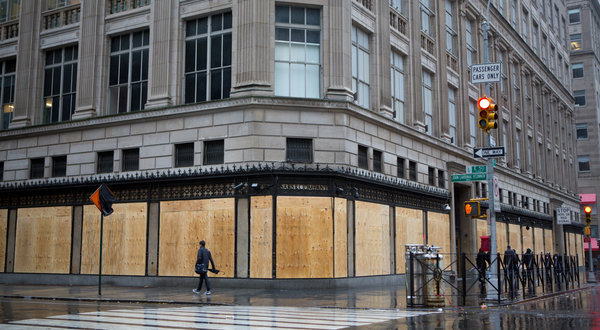After Hurricane Sandy devastated New York City and regions along the East Coast, you may have read about the link between global warming and extreme weather patterns. However, discussions about sustainable city development and urban policy are still missing from the federal agenda.
Forward-looking urban planning plays a crucial role in growing a healthy and competitive national economy. This is a fact, and Hurricane Sandy has accentuated it. Economists from Moody’s Analytics estimated that the super-storm would inflict $20 billion in loss of economic activities. New York City, in particular, will suffer the heaviest blow which accounts to $12 billion, or 60% of the losses. The total estimated cost was $50 billion; about $30 billion for property damage and $20 billion for the loss of economic activities.

To pay for the damage, New York City will utilize both federal disaster relief fund and revenues generated from its high-tax rates. As Mayor Bloomberg stated in a press conference: “New York City taxes itself and spends the money to protect us and to have the services that will keep us going. And I know of no other city that does that.” When the worst scenario happens, the Mayor doesn’t plan on relying on the federal and state resources. His point not only emphasizes self-reliance, but also highlights the fear that political gridlocks will likely prolong rebuilding efforts. Indeed, the New York Times article “Federal Relief Costs Likely to Be Big, and Contested“ illustrates such fears.
Even New York City, which is one of the richest cities in the world, cannot pay for all the necessary development on its own. Jonathan Rose, real estate developer and member of the MTA Blue Ribbon Commission on Sustainability and Climate Change, wrote that “Sandy underscored our need to invest in the planning and reconstruction of our subways, trains, tunnels, and bridges to make them more resilient—but to do so will take money, lots of it. And our cities and states don’t have it.”
We need to put urban policy onto the national agenda. Cities and states will need money from the federal government in order to build critical, resilient infrastructure. This is vital investment, and the nation has reasons to care about it. If the destruction of Hurricane Sandy can drag down 0.6 percent of economic growth, the next storm (they are appearing more frequently and getting more severe) will post severe threats to freight delivery, travel, retail, and subsequently reduce trade, the demand of manufacturing, and spending from the hourly workers who who did not get paid during the storm. All the losses of economic activity do not just affect a few cities, or states; in this example, and in today’s interconnected economy, the disruption of cities have immediate national consequences.
Furthermore, the federal government should look beyond hurricane recovery, or the short-term goal of using disaster relief funds to initiate cleanup efforts. In terms of long-term objectives, the federal government should focus on establishing effective urban policy that rebuilds resilient local communities, ensures the vibrant economy and long-term sustainability of the cities. And that will include the topics of climate change, disaster preparedness, mass transportation, education, poverty alleviation, affordable housing, and more.
Stigma is the biggest barrier. During the 2012 MAS Summit, the panel titled “Election 2012 and What’s at Stake: The Federal Government and the Future of New York City” pointed out that urban policy was not a priority in the presidential election, which showed that candidates were unwilling to associate themselves with issues such as poverty, or spending for infrastructures. However, these issues will only get worse if the federal government doesn’t grant enough funding to address them. Indeed, Manhattan Borough President Scott Stringer said in the MAS Summit that “the federal government has no plan for urban centers… the next NYC mayor will need to figure out how to get resources from the government and find ways to generate revenues.” With limited funding, engineering solutions like sea barriers remain daydreams. Even smaller interventions, like inflatable plugs to protect the tunnels, are a new cost for a very green transit system that is strapped for cash.
Since cities can directly impact the gains and losses of the nation, the federal government should start considering resilient city development as an investment, not a cost.
And no one city can completely pay for themselves in making the transformation, not even New York City.
The fiscal challenge is an issue, but the federal government should foster a cooperative inter-agency approach and take steps to establish guidelines for sustainable and competitive city developments. This is not a suggestion to enlarge the federal government. Government at the national level cannot possibly plan for all the diverse cultures and values that exist in all local communities. For example, no entity except the communities in New Jersey can decide whether Governor Chris Christie should rebuild Jersey Shore the way it was before Hurricane Sandy, or completely re-locate its coastal residents — although federal policy on flood insurance will loom as a factor in those choices.
A national guideline of city development nevertheless should help disseminate information of good urban practices and coordinate funding allocation processes among the federal, state, and city agencies.
The truth is that U.S. simply won’t be able to compete in the 21st Century without vital, creative, well functioning cities, with resilient, modern infrastructure to face the new challenges of a changing climate. As a result, cities and states will benefit from the commitment of the federal government and, in return, help strengthen the competitiveness of our nation.
Photo: New York Times